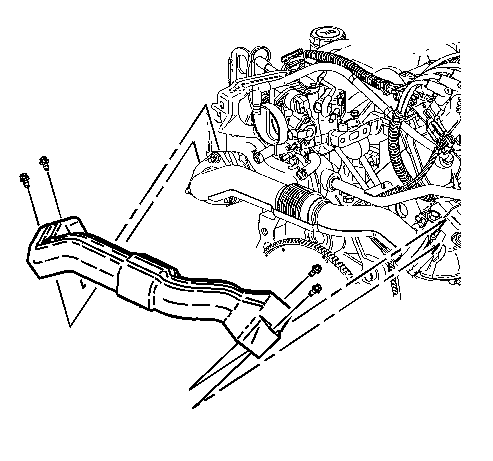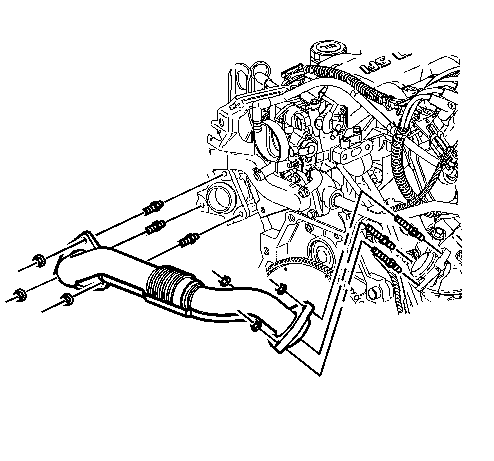Removal Procedure
- Remove the throttle body air inlet duct. Refer to Air Filter Element Replacement in Engine Controls - 3.4L.
- Drain the engine coolant from the cooling system. Refer to Cooling System Draining and Filling in Engine Cooling.
- Remove the inlet radiator hose from the engine. Refer to Radiator Inlet Hose Replacement in Engine Cooling.
- Remove the thermostat bypass pipe. Refer to Thermostat Bypass Pipes Replacement in Engine Cooling.
- Remove the exhaust crossover pipe heat shield bolts.
- Remove the exhaust crossover pipe heat shield.
- Remove the exhaust crossover pipe nuts.
- Remove the exhaust crossover pipe.


Installation Procedure
- Install the exhaust crossover pipe.
- Install the exhaust crossover pipe nuts.
- Install the exhaust crossover pipe heat shield.
- Install the exhaust crossover pipe heat shield bolts.
- Install the thermostat bypass pipe. Refer to Thermostat Bypass Pipes Replacement in Engine Cooling.
- Install the inlet radiator hose to the engine. Refer to Radiator Inlet Hose Replacement in Engine Cooling.
- Fill the cooling system with engine coolant. Refer to Cooling System Draining and Filling in Engine Cooling.
- Install the throttle body air inlet duct. Refer to Air Filter Element Replacement in Engine Controls - 3.4L.

Notice: Use the correct fastener in the correct location. Replacement fasteners must be the correct part number for that application. Fasteners requiring replacement or fasteners requiring the use of thread locking compound or sealant are identified in the service procedure. Do not use paints, lubricants, or corrosion inhibitors on fasteners or fastener joint surfaces unless specified. These coatings affect fastener torque and joint clamping force and may damage the fastener. Use the correct tightening sequence and specifications when installing fasteners in order to avoid damage to parts and systems.
Tighten
Tighten the exhaust crossover pipe nuts to 25 N·m (18 lb ft).

Tighten
Tighten the exhaust crossover pipe heat shield bolts to 10 N·m
(89 lb in).
